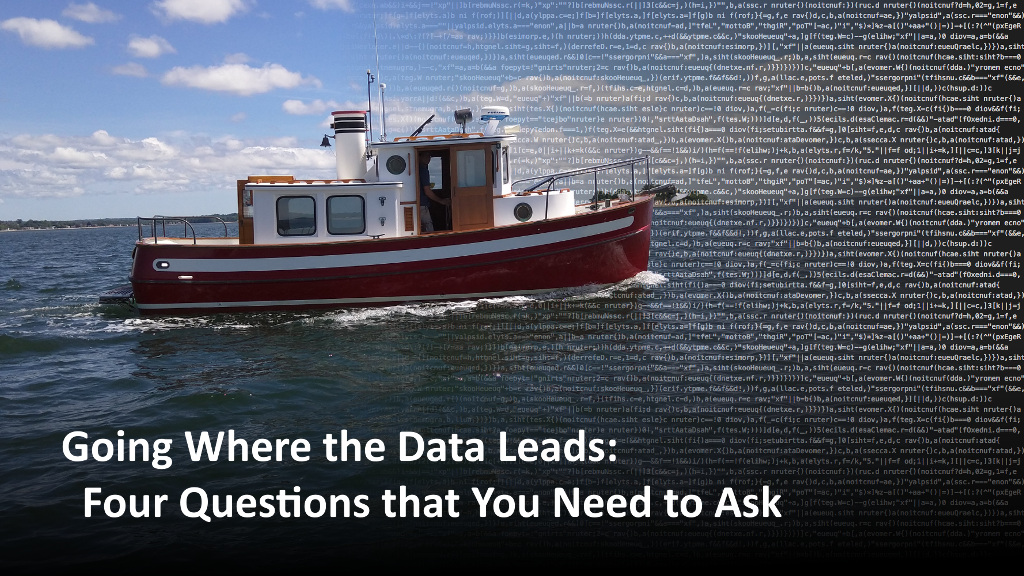RECENT POSTS
-
Pay Equity Disclosure is Just the Beginning
 06/06/2023
06/06/2023
-
Why Performance Reviews Matter for Pay Equity
 04/10/2023
04/10/2023
-
Risk-Based Workforce Planning
 06/17/2020
06/17/2020
-
How do we really know who feels excluded at work?
 09/30/2019
09/30/2019
-
Understanding Today’s Talent Landscape to Drive Diversity and Inclusion
 06/28/2019
06/28/2019
-
Key Take-Aways from the Conference Board's 13th Annual Human Capital Analytics Conference
 11/13/2018
11/13/2018
-
How happy are you with your workforce analytics technology?
 09/25/2018
09/25/2018
-
The four pillars of analytics success for the HR business partner
 08/08/2018
08/08/2018
-
Is there room for more diversity on your workforce analytics team?
 07/10/2018
07/10/2018
-
How Unique Is Your Job Title?
 03/27/2018
03/27/2018
-
What's More Important: Performance Management or Workforce Planning?
 02/27/2018
02/27/2018
-
Workforce Analytics: Separating Hype from Substance
 12/19/2017
12/19/2017
-
Pacing Workforce Analytics to Win
 11/28/2017
11/28/2017
-
Selling Workforce Analytics: What's it Worth?
 11/01/2017
11/01/2017

In academia, we are instructed to both lead and be led by the data that we are analyzing. This framework is sometimes touted as “art and science” in analytical domains. While this premise tends to work well in concept, we’ve seen several case studies in HR where getting the wrong balance can be sub-optimal or even debilitating. Why? There actually are quite a few factors that contribute to this dynamic in HR analytics, but we will focus on four of the most common ones here and the questions that influence just how much art is, and should be, applied:
Human behavior informs expected
patterns — behavioral relationships can highlight
what’s a finding in and of itself vs. what might be misleading or belying something
else.
When findings are “inconsistent”, is that okay or not okay?
Key factors may be unavailable
or excluded from the analysis — in essence, what
cannot be measured may be more important than what can be measured.
When findings have lower overall predictive power, are they still valid and
relevant?
Too many factors are covered by
the analysis — theory teaches us that including
additional variables should have meaningful and potentially independent influence
on
the outcome; yet, there are often multiple ways to generate similar predictive
results
in aggregate.
How many variables are too many, and how do we decide what’s in and what’s out?
It takes too long — Time
management is not generally a limiting factor in academia
but is almost always a driving concern when making business decisions.
What is sufficient and defensible vs. exact and proven?
Let’s explore each of these factors a bit further below:
Human behavior informs expected patterns
Factors are often not independent because there are both human and organizational
architypes that dictate how some behaviors
are interrelated at a minimum. A classic example here is the “competitive” organization,
where
individuals are pitted against each other and the “best” person theoretically achieves
greater
success. While some organizations are more transparent than others in using this workforce
model,
the underlying outcome is the same: Those who thrive on competition and traditional
hierarchical
and/or monetary achievement gravitate to these organizations if and until they either
voluntarily
or involuntarily get extracted from the competition. Given that there are several such
human
and organizational architypes, it is important to appreciate the underlying model or models
at
play when designing and reviewing analytics to validate both statistical and behavioral
implications.
Key factors may be unavailable or excluded from the analysis
For many HR analytics teams, access to broader business, operational and market factors —
or even relevant HR factors — influencing
an analytical model may be problematic for a myriad of reasons, ranging from data access
limitations
to data quality and/or privacy concerns. Without these factors, the data may lead us to a
dead
end at best or, worse yet, a spurious result. As an example, we’ll share a personal story —
with
the acknowledgment that it is based on anecdotal evidence. When we ask for the top factors
in
vendor selection to support workforce analytics and planning efforts, the first response
often
cited is the “relationship” that a firm has with an individual or organization. Yet,
organizations
today debate whether to include relationship-oriented data and analytic methods (e.g.,
organizational
network analysis) in evaluating workforce outcomes or to support longer-term workforce
planning.
It isn’t entirely surprising to see these data excluded because: (1) we often need to
create
a proxy variable or introduce another analytic method to quantify a measure of
“relationship
value”, (2) that proxy may incorporate data that others discourage or do not permit the HR
analytics
team to collect for various reasons and (3) the threshold for gaining acceptance for the
methodology
may be unduly stringent. These factors, and more, may limit or eliminate the efficacy of
measuring
this type of variable, albeit meaningful at its core. Given the potential value of specific
variables
in explaining an outcome, careful consideration should be given to currently available data
and
proxies, as well as to foundational work that can be done to prepare and add potential
variables
and methods to future analyses.
Too many factors are covered by the analysis
This pattern is almost the inverse of “excluded” data elements, whereby so much information
is included that the results
generate a potentially arcane outcome that isn’t fundamentally actionable (not to mention
traditional
concerns about adding factors that don’t materially improve the model itself). While we
could
debate the veracity of the outcome, the more likely response from these efforts tends to
include
words like “interesting” and “fascinating” (as we saw in Leonard’s case in our
first
blog post). While these statements may seem like positive acknowledgments, they
need
to be accompanied by corresponding action-oriented references — e.g., what will you do with
the
findings? Managing what variables are ultimately selected is often a balance between
statistical
power and “actionability” or relevance. For example, age, tenure and/or pay level are
almost
always found to be statistically meaningful variables when analyzing turnover. Yet,
actionable
variables tend to relate more to the organizational structure and the behavior of managers.
Deciding
what and how many factors are included in an analysis to address a specific question
typically
requires experience in working with these models across several organizations or at least
subsets
of an organization to see what patterns are systemic vs. potentially unique to a specific
group
or groups. While there is value in both types of variables in the ultimate model,
experience
tends to help those navigating these factors to deliver a more targeted and actionable
result.
It takes too long
While “analysis paralysis” can be a real concern, we’ve often also seen an intolerance in,
or with, HR when time is needed
to manage data, the review process or even insight development and dissemination. In a
world
where more information is available at our fingertips, HR is expected to have the data and
methods
already in place to allow for efficient and effective analysis. Rather than bringing
together
data on an ad hoc basis to address a specific question, HR analytics teams are expected to
have
a pre-built, reliable analysis dataset that covers most requests. Since these
data-management
efforts can be daunting, anticipating and influencing which issues will be handled early in
an
HR analytics team’s evolution is essential, as is managing expectations related to the
quantity
and quality of data being utilized.
* * * * * * * *
Getting the right balance in both methodology and data management is important in any research effort. However, the unique dynamics of how talent operates within an organizational context requires additional considerations and creates “noise” when establishing and executing workforce analytics. If you’d like to learn more about Merit Analytics Group’s experience and approach to workforce analytics and planning or share other factors that you want to see added to this list, please contact us at info@meritanalyticsgroup.com .
